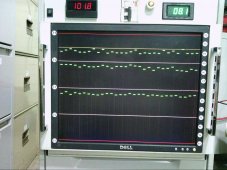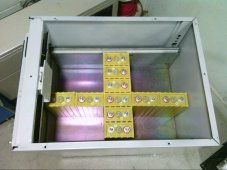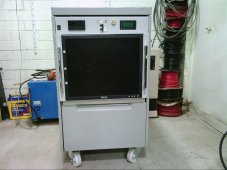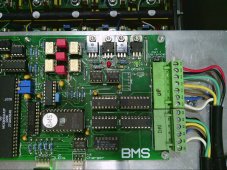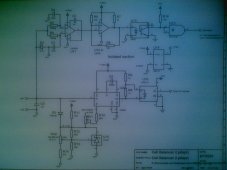I'm hoping to pick the brains of folks with some hands on experience with LiFePo4 for off grid power regarding balancing options for a new BMS design for a bare cell lithium replacement for my off grid 120VDC battery bank (100ah). I'm a EE/CS guy, retired, and have used my own design 120VDC system for the last 12 years using wet lead-calcium type "marine deep cycle" batteries, getting about 4.5 years per set of ten 12V 110 ah batteries. I also have my own design inverter so have 120/240 AC for well pumping, laundry, and shop use. My system uses my own custom BMS/battery balancer and PV charge regulator. I recently found Will's fantastic youtube series and want to design a new system for LiFePo4 cells,
What I lack is first hand experience with LiFeP04 cells particularly with the issue of how much ongoing passive balancing current is needed. Because I'll need 39 batteries in series for my nominal 120V bank operating between 3.05 and 3.4 V. I'd like to keep things as simple as practical. At present I'm have two options in consideration.
The simplest option is a passive, top side 3.4v shunt voltage regulator for each cell, and to mod my custom PV regulator to a fixed voltage to maintain the cells at a constant 3.4V plus a tiny bit t so they just barely self regulate. Since the cells would be held at 3.4V for 5+ hours every day, this seems to me, an utter lithium novice, that this might do the trick of balancing at 100ma or less. Large balance current just means more board, heat sinking and wiring cost. My current 12V battery regulator is quite involved, with temperature compensation, 3 voltage levels of regulation, up to 3 amp (linear) shunt current and shunt current feedback to the BMS so charge current is limited as needed. I'd like to keep things as simple as I can for the 38 (ouch) LiFePo4 cell regulators.
I can add low and high cell voltage with a bussed capacitively coupled signal for emergency alarm.
I wonder if this will provide acceptable balance over time with low cost LiFePo4 batteries, and or how much current the shunt regulator should be able to sink?
My typical charge rate is very low, limited by sun angle in the early morning; my DOD is quite low. My maximum charge rate is 16 amps. My maximum discharge rate is 20amps. Remember this is at 120VDC nominal.
I'm not interesting in the commercial higher voltage bank balancers for both cost and conducted EMI reasons. The are designed for high current applications and mine is a modest off grid home power.
As a retired EE, I must say I've been consistently impressed at Will's videos. The care and skill to make things technically accurate will still understandable to the non-engineer lay people is VERY impressive. I usually frequently cringe at bloopers in "technical" information videos, but never for Wil'l's channel. Bravo!
BruceM
What I lack is first hand experience with LiFeP04 cells particularly with the issue of how much ongoing passive balancing current is needed. Because I'll need 39 batteries in series for my nominal 120V bank operating between 3.05 and 3.4 V. I'd like to keep things as simple as practical. At present I'm have two options in consideration.
The simplest option is a passive, top side 3.4v shunt voltage regulator for each cell, and to mod my custom PV regulator to a fixed voltage to maintain the cells at a constant 3.4V plus a tiny bit t so they just barely self regulate. Since the cells would be held at 3.4V for 5+ hours every day, this seems to me, an utter lithium novice, that this might do the trick of balancing at 100ma or less. Large balance current just means more board, heat sinking and wiring cost. My current 12V battery regulator is quite involved, with temperature compensation, 3 voltage levels of regulation, up to 3 amp (linear) shunt current and shunt current feedback to the BMS so charge current is limited as needed. I'd like to keep things as simple as I can for the 38 (ouch) LiFePo4 cell regulators.
I can add low and high cell voltage with a bussed capacitively coupled signal for emergency alarm.
I wonder if this will provide acceptable balance over time with low cost LiFePo4 batteries, and or how much current the shunt regulator should be able to sink?
My typical charge rate is very low, limited by sun angle in the early morning; my DOD is quite low. My maximum charge rate is 16 amps. My maximum discharge rate is 20amps. Remember this is at 120VDC nominal.
I'm not interesting in the commercial higher voltage bank balancers for both cost and conducted EMI reasons. The are designed for high current applications and mine is a modest off grid home power.
As a retired EE, I must say I've been consistently impressed at Will's videos. The care and skill to make things technically accurate will still understandable to the non-engineer lay people is VERY impressive. I usually frequently cringe at bloopers in "technical" information videos, but never for Wil'l's channel. Bravo!
BruceM



